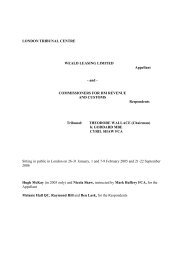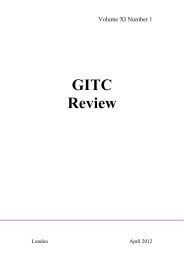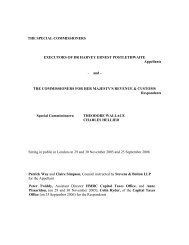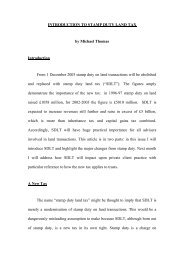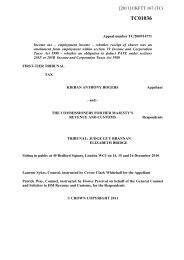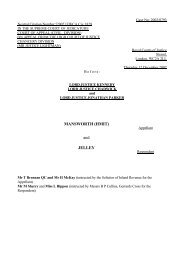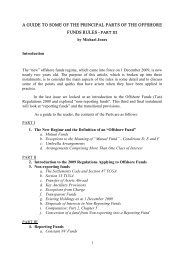Full Transcript
Full Transcript
Full Transcript
You also want an ePaper? Increase the reach of your titles
YUMPU automatically turns print PDFs into web optimized ePapers that Google loves.
that, however eminent an artist may be, that does not mean that all<br />
his works are of historical interest and, at most, only those that<br />
break new ground or represent a particular turning point in the<br />
artist’s career can be of historical interest.<br />
Discussion<br />
43. The first issue we have to consider is whether the Viola works<br />
can be classified as sculpture within the meaning given to that<br />
word in Chapter 97 heading 97 03. We accept Mr O’Connor’s<br />
submission that the decision must be based on the objective<br />
characteristics of the goods as presented and which the importer<br />
has declared to be sculptures.<br />
44. The Onnasch case is very relevant as it established that a<br />
liberal interpretation of the headings should be adopted because of<br />
the absence of a residual heading. As we have already noted, in the<br />
Gmurzynska-Bscher case the ECJ, as well as repeating that a<br />
liberal interpretation should be adopted, also read note 4 of the<br />
Chapter Notes as requiring that were there is doubt about a<br />
classification of a work that is in fact a work of art, preference<br />
should be given to one of the Chapter 97 headings over those of any<br />
other Chapter. We read that to mean that once a work is identified<br />
as a work of art then a prima facie case for classification under one<br />
of the headings is all that is needed to bring it within one of those<br />
headings.


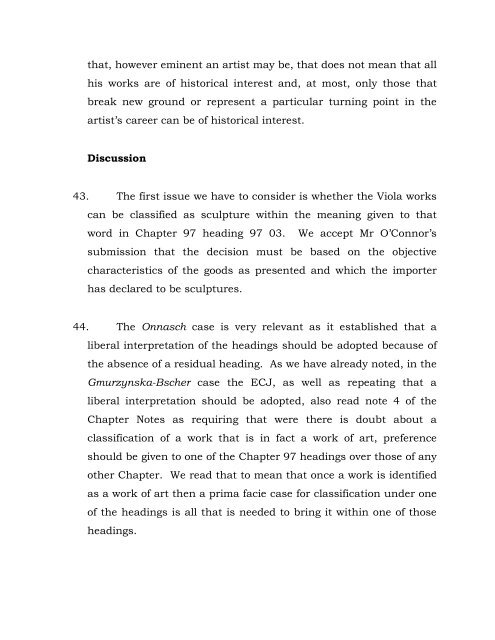
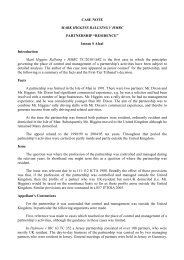
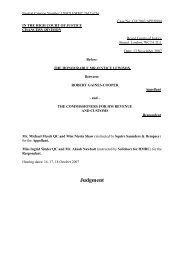
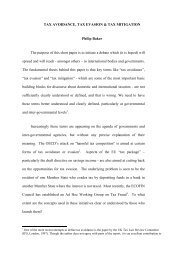
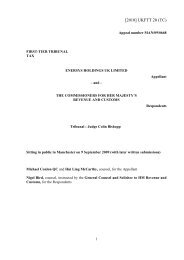
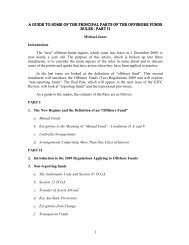
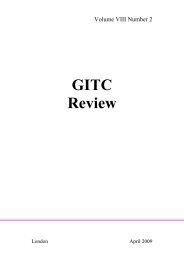
![Mohammed Siddiq Khan v. HMRC [2006] EWCA Civ 89](https://img.yumpu.com/45700564/1/184x260/mohammed-siddiq-khan-v-hmrc-2006-ewca-civ-89.jpg?quality=85)
